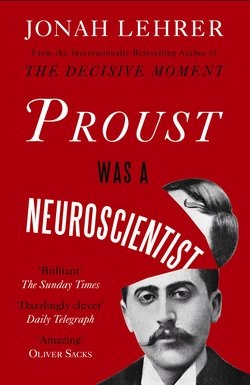Читать книгу Proust Was a Neuroscientist - Jonah Lehrer - Страница 15
На сайте Литреса книга снята с продажи.
George Eliot
ОглавлениеThe Biology of Freedom
Seldom, very seldom, does complete truth belong to any human disclosure; seldom can it happen that something is not a little disguised or a little mistaken.
— Jane Austen, Emma
GEORGE ELIOT WAS A WOMAN of many names. Born Mary Anne Evans in 1819, the same year as Queen Victoria, she was at different times in her life Mary Ann Evans, Marian Evans, Marian Evans Lewes, Mary Ann Cross, and, always in her art, George Eliot. Each of her names represented a distinct period of her life, reflecting her slightly altered identity. Though she lived in a time when women enjoyed few freedoms, Eliot refused to limit her transformations. She had no inheritance, but she was determined to write. After moving to London in 1850 to become an essayist and translator, Eliot decided, at the age of thirty-seven, to become a novelist. Later that year, she finished her first novella, The Sad Fortunes of the Reverend Amos Barton. She signed the story with her new name; she was now George Eliot.
Why did she write? After finishing her masterpiece Middlemarch (1872), Eliot wrote in a letter that her novels were “simply a set of experiments in life — an endeavor to see what our thought and emotion may be capable of.” Eliot’s reference to “experiments” isn’t accidental; nothing she wrote was. The scientific process, with its careful blend of empiricism and imagination, fact and theory, was the model for her writing process. Henry James once complained that Eliot’s books contained too much science and not enough art. But James misunderstood Eliot’s method. Her novels are fiction in the service of truth, “examination[s] of the history of man” under the “varying experiments of time.” Eliot always demanded answers from her carefully constructed plots.
And while her realist form touched upon an encyclopedia of subjects, her novels are ultimately concerned with the nature of the individual. She wanted “to pierce the obscurity of the minute processes” at the center of human life. A critic of naïve romanticism, Eliot always took the bleak facts of science seriously. If reality is governed by mechanical causes, then is life just a fancy machine? Are we nothing but chemicals and instincts, adrift in an indifferent universe? Is free will just an elaborate illusion?
These are epic questions, and Eliot wrote epic novels. Her Victorian fiction interweaves physics and Darwin with provincial politics and melodramatic love stories. She forced the new empirical knowledge of the nineteenth century to confront the old reality of human experience. For Eliot, this was the novel’s purpose: to give us a vision of ourselves “more sure than shifting theory.” While scientists were searching for our biological constraints — they assumed we were prisoners of our hereditary inheritance — Eliot’s art argued that the mind was “not cut in marble.” She believed that the most essential element of human nature was its malleability, the way each of us can “will ourselves to change.” No matter how many mechanisms science uncovered, our freedom would remain.
